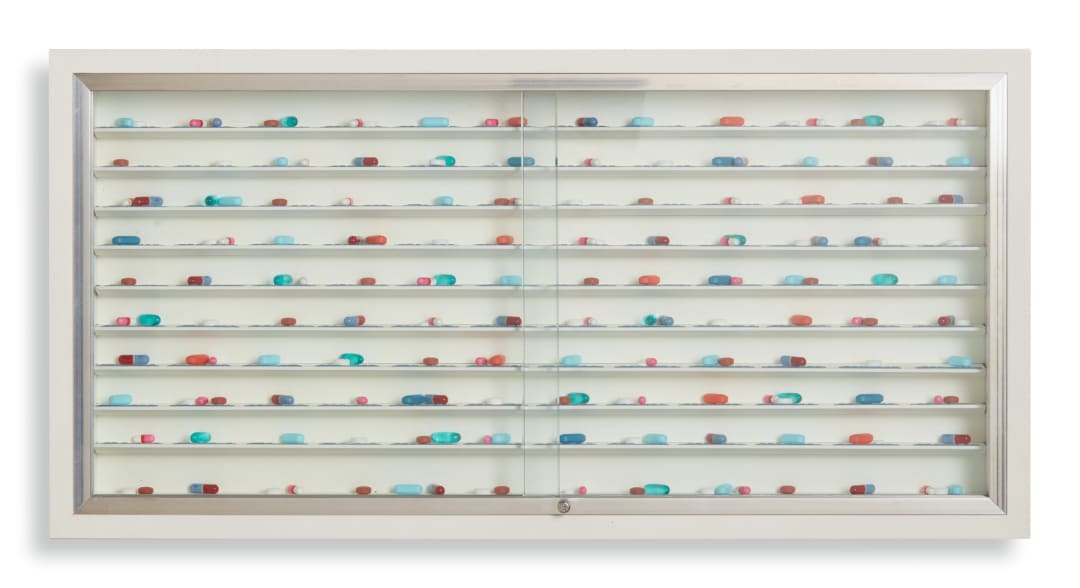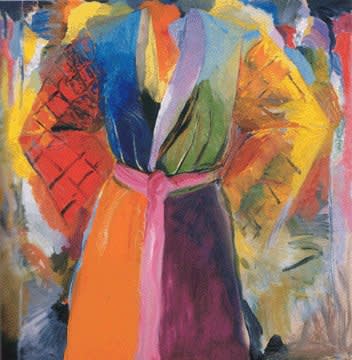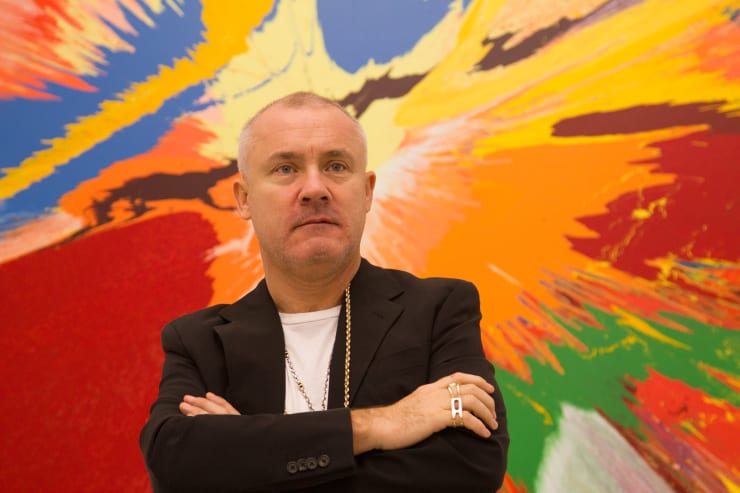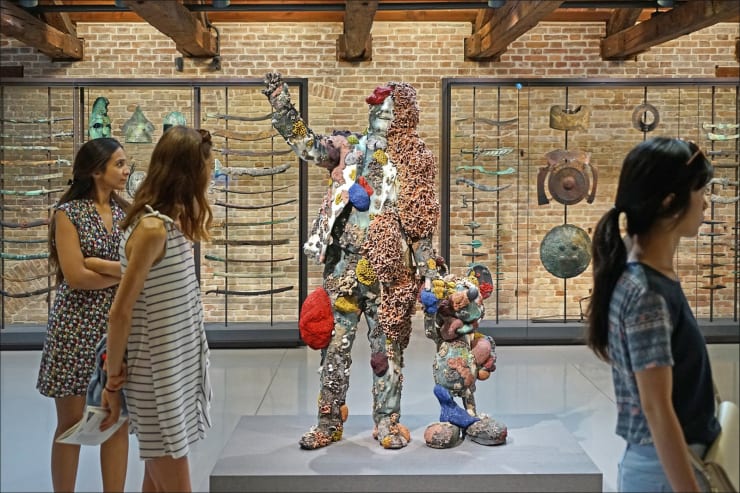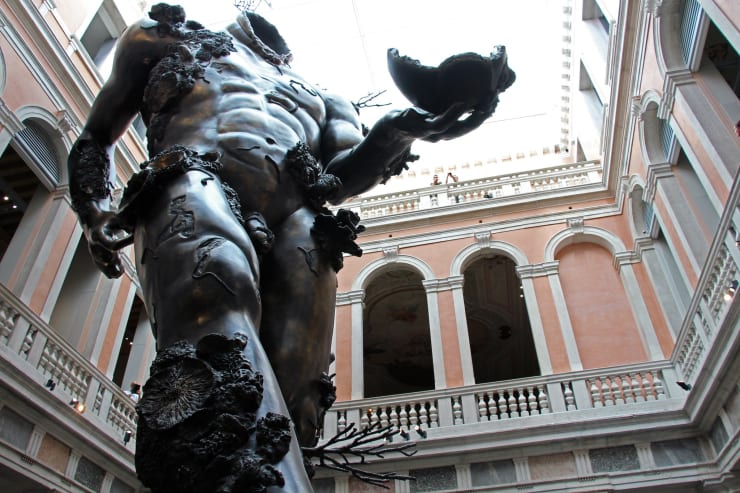Damien Hirst
-
 Damien HirstNūr Jahān, 2022Laminated Giclée print on aluminium composite, screen printed with glitter39 1/2 x 39 1/2 ins 100.33 x 100.33 cm
Damien HirstNūr Jahān, 2022Laminated Giclée print on aluminium composite, screen printed with glitter39 1/2 x 39 1/2 ins 100.33 x 100.33 cm -
 Damien HirstSuiko, 2022Laminated Giclée print on aluminium composite, screen printed with glitter39 1/2 x 39 1/2 ins 100.33 x 100.33 cm
Damien HirstSuiko, 2022Laminated Giclée print on aluminium composite, screen printed with glitter39 1/2 x 39 1/2 ins 100.33 x 100.33 cm -
 Damien HirstTaytu Betul, 2022Laminated Giclée print on aluminium composite, screen printed with glitter39 1/2 x 39 1/2 ins 100.33 x 100.33 cm
Damien HirstTaytu Betul, 2022Laminated Giclée print on aluminium composite, screen printed with glitter39 1/2 x 39 1/2 ins 100.33 x 100.33 cm -
 Damien HirstTheodora, 2022Laminated Giclée print on aluminium composite, screen printed with glitter39 1/2 x 39 1/2 ins 100.33 x 100.33 cm
Damien HirstTheodora, 2022Laminated Giclée print on aluminium composite, screen printed with glitter39 1/2 x 39 1/2 ins 100.33 x 100.33 cm -
 Damien HirstWu Zetian, 2022Laminated Giclée print on aluminium composite, screen printed with glitter39 1/2 x 39 1/2 ins 100.33 x 100.33 cm
Damien HirstWu Zetian, 2022Laminated Giclée print on aluminium composite, screen printed with glitter39 1/2 x 39 1/2 ins 100.33 x 100.33 cm -
 Damien HirstMethionine, 2010Color Woodcut Print On 410 Gsm Somerset White Textured Paper24 1/2 x 32 ins 62.23 x 81.28 cm
Damien HirstMethionine, 2010Color Woodcut Print On 410 Gsm Somerset White Textured Paper24 1/2 x 32 ins 62.23 x 81.28 cm
Damien Hirst
There was a period of time during the 1990s in England that dubbed certain young and budding artists the “Young British Artists” group. These artists dominated the art scene all throughout the 1990s and became quite noted for their unique artworks, on top of netting millions of dollars from their pieces. One artist from this group in particular would become well known within the art community the world over and would become not only an active artist but also an entrepreneur and one of Britain’s most richest living artists. That artist is Damien Hirst, born on June 7th in 1965.
Hirst was born in Bristol, but spent most of his childhood in Leeds. Even at an early age, he was experimenting with different artistic mediums and generally was “different” from the other children his age. Eventually, he would go to school for fine art at the University of London and then go on to work at a mortuary for some time. It was during his time at the mortuary that he took a lot of inspiration from death and dying and incorporated it into his artwork, which established his name within the art community.
Hirst would also start to showcase his artwork in impromptu student galleries he organized himself in abandoned warehouses with fellow art students. This led to him being completely funded by Charles Saatchi for whatever artwork he created. He would go on to create his first “big” piece, which was the very famous dead shark in formaldehyde and cut in half, titled “The Physical Impossibility of Death in the Mind of Someone Living,” which went on to initially sell for £50,000.
This would bring in even more fame and notoriety for the unique installations and pieces that Damien Hirst created. All of them dealt with death and included sectioned cows and their calves, a dead sheep in formaldehyde, and other dead creatures. His exhibits became so controversial that public health officials for New York banned one of his exhibits for fear of guests vomiting and generally becoming sick.
During the 2000s, Hirst would continue to make his controversial pieces as well as focus on sculpture. Mostly recently in 2007, Damien Hirst created his “For the Love of God” piece which was a diamond encrusted platinum reconstruction of a human skull. This particular piece took 8,601 diamonds to complete and altogether had well over a million dollars worth of diamonds adorned to it.
Damien Hirst is still working and creating artwork to this day, as well as winning countless awards and being an overall controversial figure in the modern art community. However, his most recent works have included more traditional painting and woodcuts.
-

VFA: The Excitement of Art Week 2023
December 6, 2023Miami is an exciting city, but everything gets ramped up and even more exciting during Art Week. The art, fashion, design, even the food, seems...Read more -

VFA at Art Miami 2023
November 29, 2023Vertu Fine Art will be exhibiting the finest Modern and Contemporary art at Art Miami 2023. The 33rd Edition of Art Miami 2023 runs from...Read more -

Jim Dine Examines Jim Dine; Keith Haring's Work at The Broad
VFA at the Hamptons Fine Art Fair This Weekend July 12, 2023I have come to terms with a lot of things, because, when it’s all said and done, there’s really very little one can do about...Read more -

Recent Acquisitions at VFA
Works by Michael Craig-Martin, Alex Katz, Ian Davenport and En Iwamura June 14, 2023Some of the new works that we have in our gallery come from three amazing artists who, it turns out, are connected by six degrees of separation. All three of these fine artists, Alex Katz, Michael Craig-Martin and Ian Davenport, are masters of color, design, composition, painting and printmaking. Michael Craig-Martin’s most recent show was at the Seongnam Cube Art Museum in South Korea last month.Read more -

Damien Hirst's Statue Hit by Rolls | Larry Poons Works on Exhibit in New York
April 18, 2023A woman driving her Rolls-Royce in Palm Beach crashed into a multi-million dollar Damien Hirst sculpture in the yard of an art collector’s mansion and...Read more -

Damien Hirst Burning His Paintings / KAWS Honored at the Hirshhorn / Reimagining Count Chocula
August 21, 2022On September 9th, Damien Hirst will begin to burn about 5,000 pieces of his art. The move is a calculated act that he calls The Currency. Hirst created 10,000 small oil paintings on paper that he linked to corresponding NFTs in 2021. Buyers who bought the NFTs for $2000 were given a choice: keep the NFT or trade it for the physical painting. Holding on to both is not an option.Read more -

Claes Oldenburg Remembered
July 19, 2022Claes Oldenburg: January 28, 1929 – July 18, 2022 I am for an art that is political, erotical, mystical, that does something more than sit...Read more -

Damien Hirst: The Bad Boy is Back
May 23, 2017Damien Hirst’s show at this year’s Venice Biennale has, once again, created a storm of love-it-or-hate-it critiques. There was much the same uproar when Hirst...Read more -

Damien Hirst: Making a Myth in Venice
April 7, 2017Damien Hirst has designed a fictional museum, with works of fantasy, based on a myth that he created. What he would like viewers to do,...Read more -

All That Glitters: Hirst’s Diamond Skulls
May 28, 2014Time and again, British Pop Artist Damien Hirst has demonstrated that when it comes to Contemporary Art, no subject is out of bounds. In fact,...Read more -

Damien Hirst: Sensational
June 27, 2013At 48 years old, Damien Hirst, who rose to fame as a leader of the 1990’s Young British Artists (YBA) movement, is one of the most commercially successful artists living today. He is also one of the more controversial. His detractors liken him to a radio shock jock, an opportunist, a serial businessman. His supporters consider him to be a man of conviction, a trailblazer and a master. Hirst’s knack for sensationalizing common objects and leveraging his celebrity status often place him alongside Warhol, Haring and other popular artists.Read more







